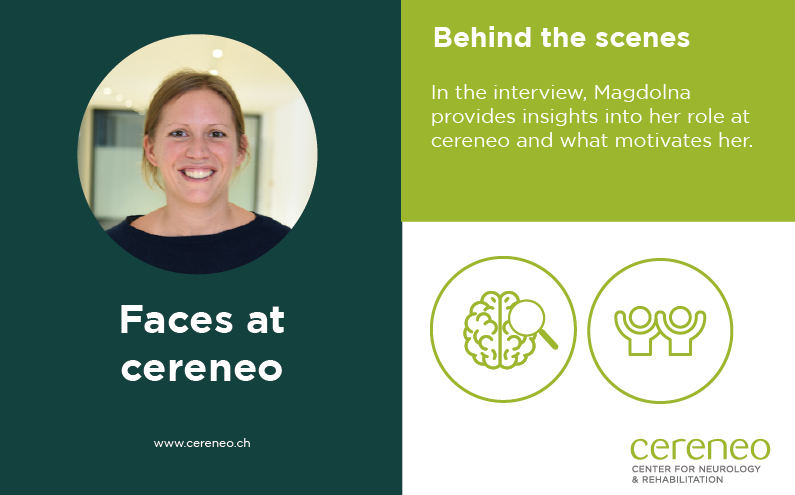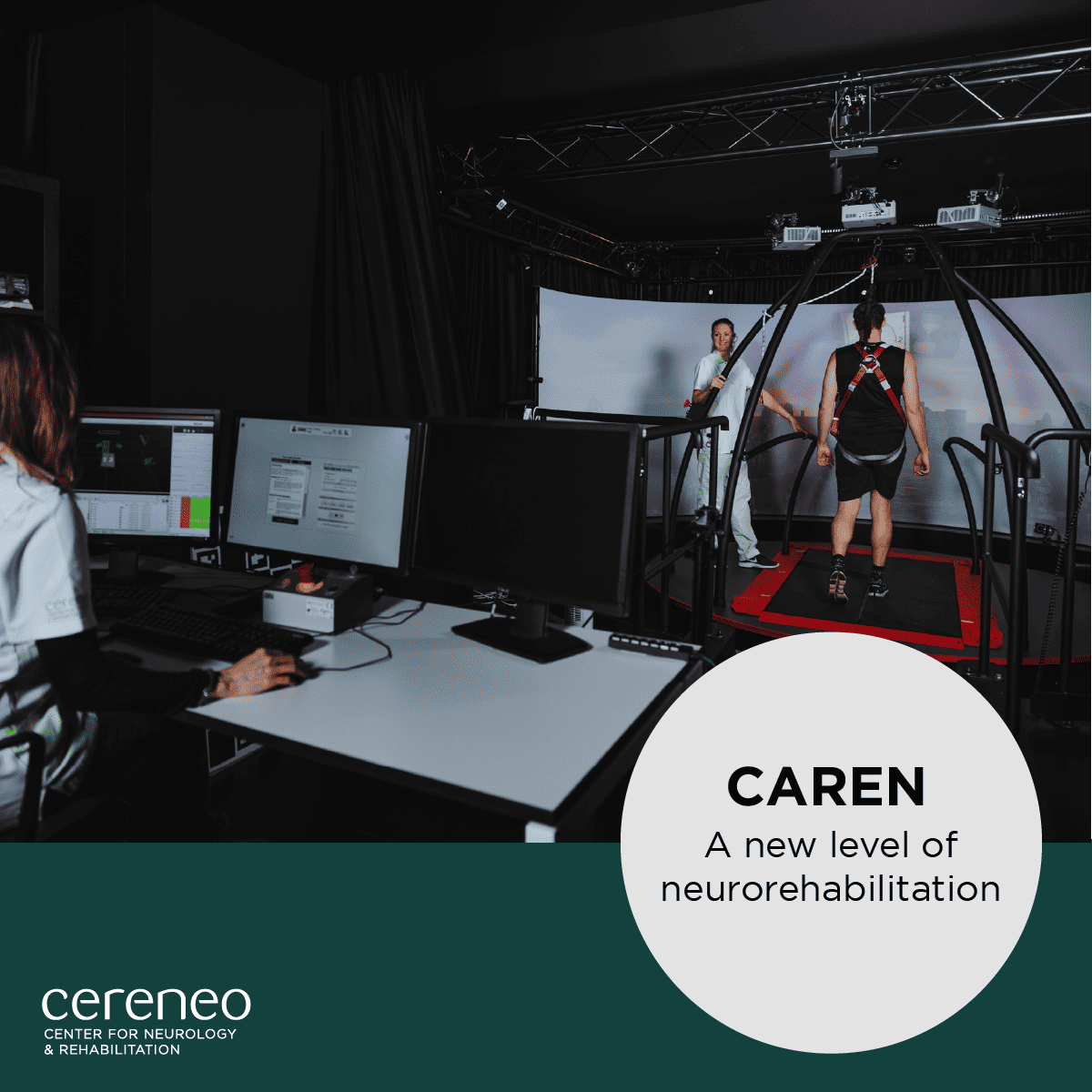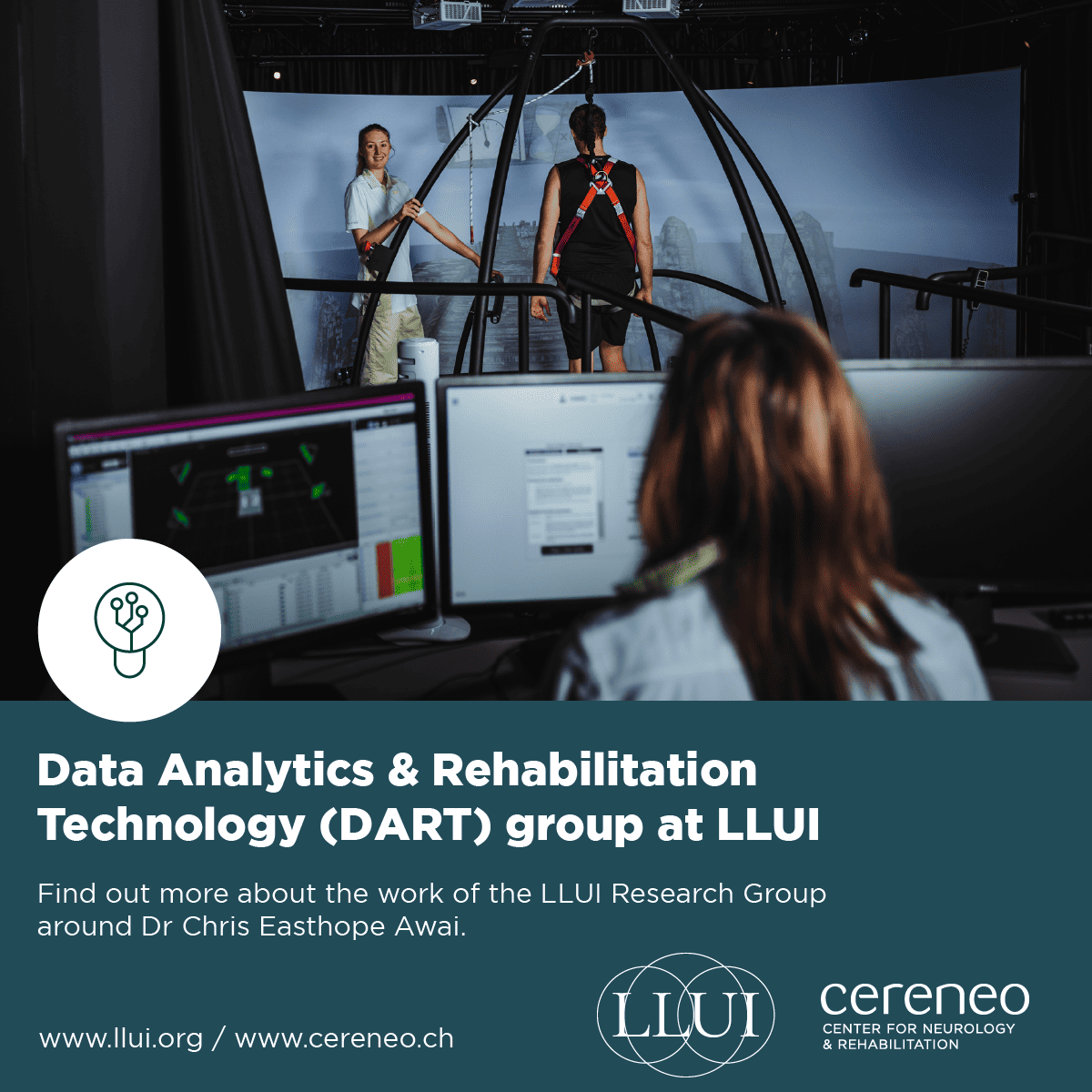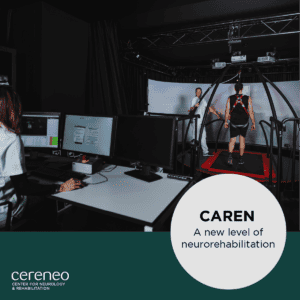Dr Magdolna Mezes has been working for cereneo as a senior physician in the clinic in Hertenstein since April 2023. Already as a small child, Magdolna was fascinated by books about human anatomy, and an illness case in the family brought her into contact with medicine at an early age. With chemistry and physics as her favorite subjects at grammar school, it was clear to her that she wanted to become a doctor.
What fascinated you about neurology?
Above all, the way the brain works, its connections and how it can be influenced. I therefore wanted to study it more intensively and started working in a psychiatric clinic. There, however, I realised that this was not quite the right direction, and I then moved to the University Hospital of Salzburg to the Department of Neurology with its main focus on epilepsy.
What was the decisive point why you switched to rehabilitation?
During my time in Salzburg, I had the opportunity to spend 6 months in Helsinki to better understand magnetoencephalography (MEG). This is an extremely precise instrument, especially for the exact localisation of the epilepsy focus. There, I happened to observe a patient with paraplegia being treated with TMS. This was the first time I had seen TMS being used in conjunction with rehabilitation. Before, I only knew it for diagnostic purposes. (Here is more information about TMS / TdCS.) I found this so exciting that I volunteered myself as a test subject. From that point on, I knew that I wanted to work in a neurological rehabilitation clinic.
Which new approaches in neurorehabilitation have impressed you the most since you joined cereneo?
I find the areas of neuropsychology and neurocognitive rehabilitation very exciting. But as already mentioned, neurostimulation fascinates me the most. At cereneo, we use neurostimulation in combination with therapies such as physiotherapy or neuropsychology and speech therapy. With TMS and TDCS, we can promote neuroplasticity. Neuroplasticity, the brain’s ability to reorganise and adapt, plays a crucial role in rehabilitation after neurological events such as strokes or injuries to the central nervous system. The simultaneous application of proven conventional therapies in combination with innovative neurostimulation opens up a significantly more effective dimension of neurorehabilitation.
Why did you decide to work for cereneo?
The treatment concept of cereneo is quite unique. From the close cooperation with research to the interdisciplinary approach across all levels. Here I have much more time for my patients, as we have fewer patients per doctor than other clinics. A big point for me was also the possibility to treat patients with neuro-stimulation and non-invasive brain stimulation, as I would like to develop further in these areas.
What do you look forward most about working at cereneo?
Above all, I look forward to being able to spend a lot of time with each of my patients, but also the possibility to further deepen my knowledge of neuro-stimulation and to work on researching new approaches and methods. Currently, I am even planning to work on a new study together with Dr Meret Branscheidt, our medical director at the clinic in Hertenstein.










